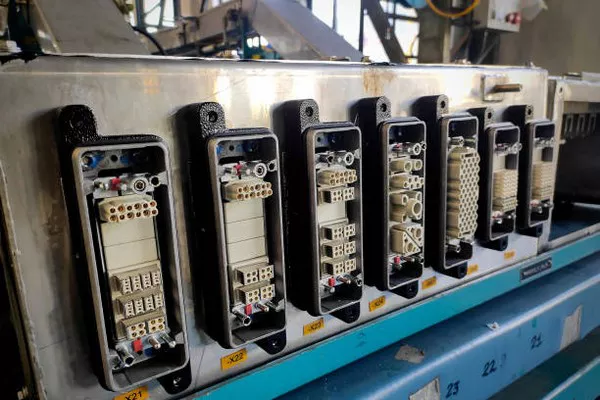In an era defined by electrical power, DC generators have played a pivotal role in generating direct current (DC) electricity for various applications. Whether it’s powering early electrical systems or serving as a backup power source, understanding the fundamental principles behind these devices is essential. In this comprehensive exploration, we delve into the inner workings of a DC generator, shedding light on the science and engineering that make it all possible.
Direct current generators, often referred to as DC generators or dynamos, are electromechanical devices that convert mechanical energy into electrical energy in the form of direct current. These generators have a rich history and have been a cornerstone in the development of electrical power systems. They are still in use today, particularly in situations where a stable, continuous DC power supply is required.
Basic Components of a DC Generator
To comprehend the operation of a DC generator, it is crucial to understand its basic components:
Armature: The heart of the generator is the armature, a cylindrical core made of iron or other magnetic materials. It is mounted on an axle and rotated within a magnetic field.
Field Magnets: Surrounding the armature are the field magnets, which produce a magnetic field that interacts with the armature’s motion. These magnets can be either permanent magnets or electromagnets, depending on the generator’s design.
Commutator: Attached to the armature shaft, the commutator is a split ring or cylindrical device made of copper segments insulated from each other. It plays a crucial role in ensuring that the generated electricity is direct current.
Brushes: Carbon or graphite brushes are in contact with the commutator. These brushes allow the electrical connection between the rotating armature and the external circuit.
External Circuit: The electrical load or circuit to which the generated DC is supplied is connected to the brushes.
How Does a DC Generator Work?
The operation of a DC generator can be broken down into several key steps:
Creation of a Magnetic Field: In a DC generator, a magnetic field is established either by permanent magnets or electromagnets. This magnetic field is typically radial, meaning the magnetic lines of force run from the center of the armature to its periphery.
Rotation of the Armature: The armature is connected to a mechanical prime mover, such as an engine or a turbine. When this prime mover rotates the armature, it cuts through the magnetic field, creating relative motion between the armature and the magnetic field.
Induction of Electromotive Force (EMF): As the armature rotates within the magnetic field, Faraday’s law of electromagnetic induction comes into play. This law states that when a conductor (in this case, the armature) cuts through magnetic lines of force, an electromotive force (EMF) is induced in the conductor. This induced EMF causes electrons within the armature to move, creating an electric current.
Role of the Commutator: The generated current is alternating in nature, meaning it reverses direction with each half-rotation of the armature. To convert this alternating current (AC) into direct current (DC), the commutator comes into play. As the armature rotates, the commutator segments are alternately connected to the brushes. When a segment is in contact with a brush, it forms part of the external circuit, allowing current to flow in one direction. As the armature continues to rotate, the other commutator segment takes over, maintaining the flow of current in the same direction.
Output to the External Circuit: The direct current produced by the commutator is then transferred to the external circuit through the brushes. This current can be used to power various electrical devices or stored in batteries for later use.
Types of DC Generators
DC generators come in various types, each designed for specific applications. The two primary categories are:
Series Wound Generators: In series wound generators, the field winding is connected in series with the armature winding. These generators provide high current at low voltage, making them suitable for applications requiring substantial starting torque, such as electric traction systems and some industrial machinery.
Shunt Wound Generators: Shunt wound generators have the field winding connected in parallel (shunt) with the armature winding. They deliver relatively constant voltage output across a range of loads and are commonly used in applications where a stable voltage source is essential, such as in lighting systems and battery charging.
Compound Wound Generators: Compound wound generators combine elements of both series and shunt winding. They offer the advantages of both types, providing both high starting torque and relatively constant voltage regulation. Compound wound generators are employed in various applications, including industrial settings and power generation.
Efficiency and Advantages of DC Generators
DC generators have several advantages and continue to find relevance in certain applications:
Simple and Reliable: DC generators are relatively simple in design and are known for their reliability. They have fewer components compared to some of their AC counterparts, reducing the likelihood of complex failures.
Direct Current Output: DC generators inherently produce direct current, which is essential for applications requiring a constant and stable voltage source.
Precise Speed Regulation: DC generators can maintain a constant output voltage over a wide range of speeds, making them suitable for situations where precise speed control is necessary.
Well-Suited for Specific Applications: DC generators excel in applications that demand high starting torque, such as electric vehicles, elevators, and some industrial machinery.
Effective for Battery Charging: DC generators are commonly used for charging batteries, ensuring a consistent and controlled charging process.
Backup Power: They serve as reliable backup power sources, offering a dependable supply of electricity during emergencies or power outages.
Conclusion
In a world where electrical power is omnipresent, understanding the inner workings of devices like DC generators is essential. These electromechanical wonders continue to provide reliable and stable direct current in a wide range of applications, from early electrical systems to modern industrial processes. As technology advances, DC generators may evolve, but their fundamental principles remain a cornerstone of electrical engineering and power generation.


